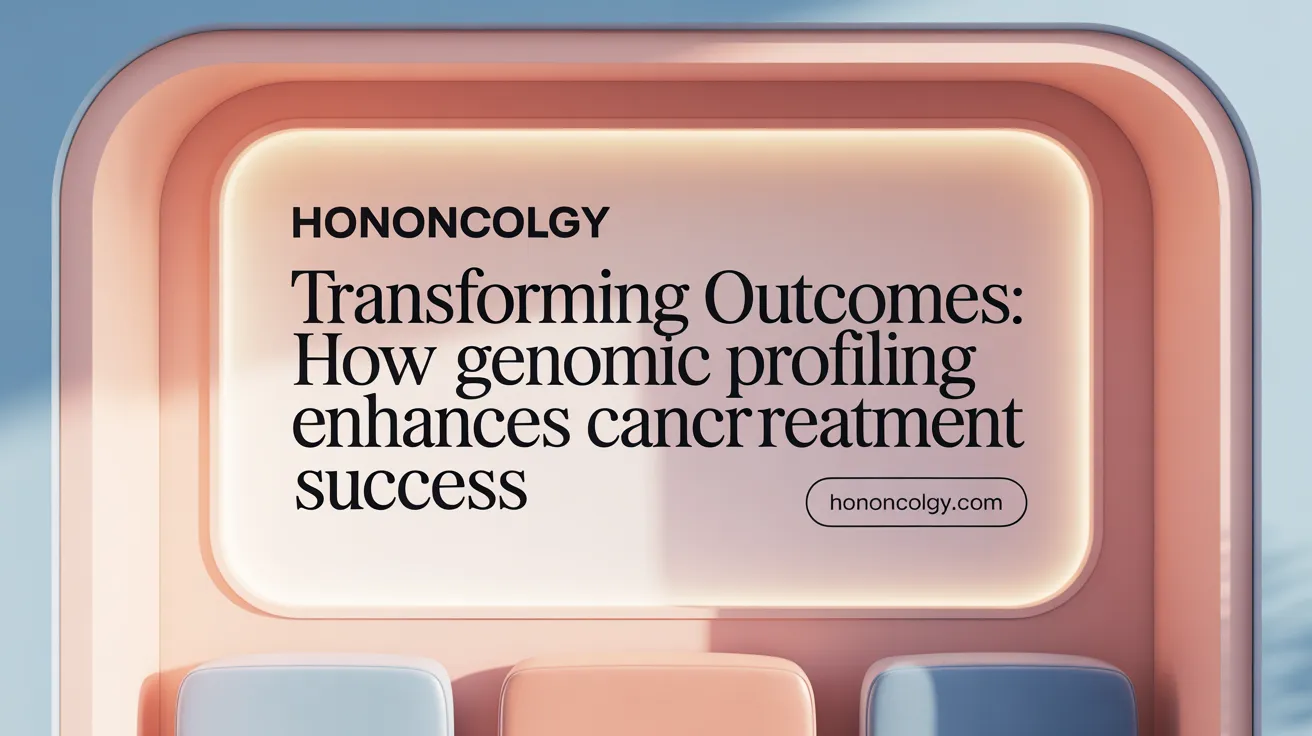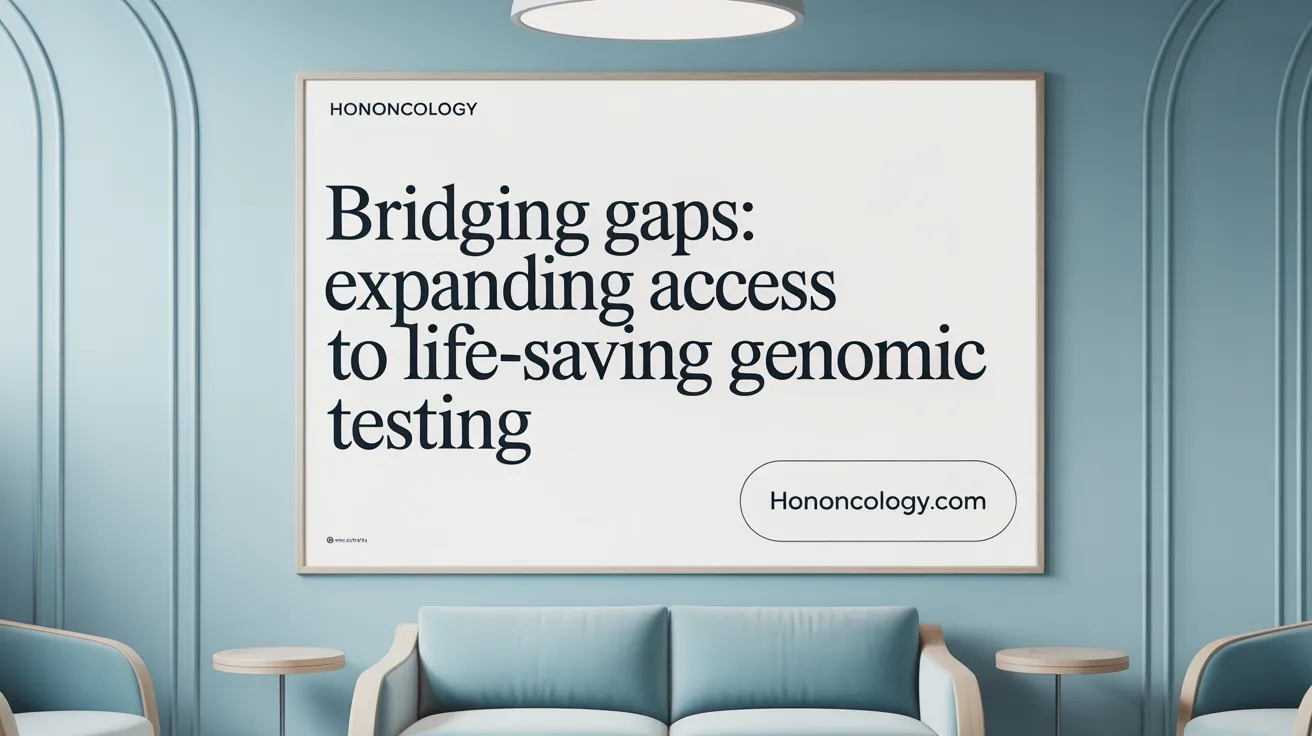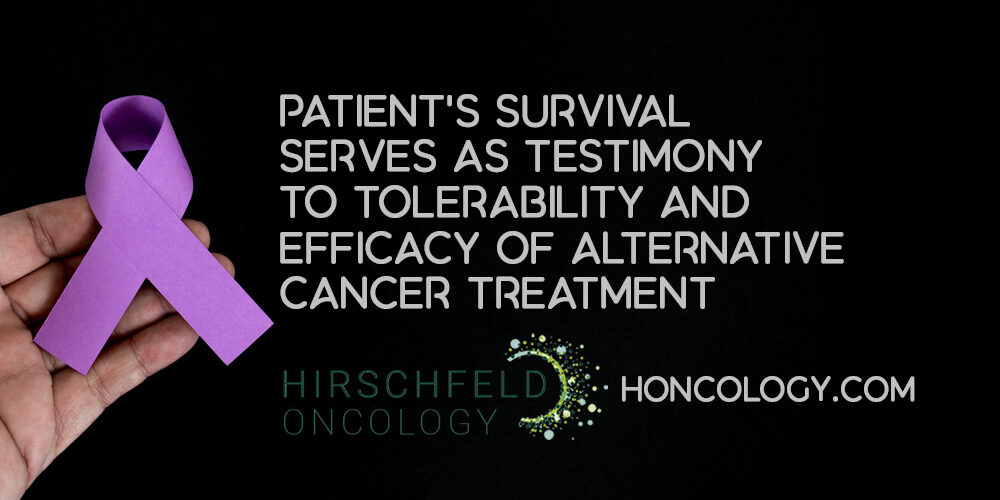Harnessing Genomic Solutions for Enhanced Cancer Care
Overview of genomic profiling in improving cancer treatment outcomes
Comprehensive genomic profiling (CGP) uses advanced next-generation sequencing to analyze hundreds of cancer-related genes simultaneously. This approach identifies genetic mutations and biomarkers that influence tumor behavior and treatment response. Studies reveal that CGP detects actionable mutations in about 67% of tumors, significantly higher than traditional small-panel tests. Patients matched to targeted therapies or immunotherapies based on CGP results show notably improved survival rates, with some experiencing extended median overall survival beyond 16 months compared to conventional treatments.
The integration of precision medicine in oncology
Precision medicine leverages CGP to tailor treatments according to each tumor's unique molecular signature. Multidisciplinary molecular tumor boards interpret complex genomic data and recommend personalized therapies, including targeted agents and immunotherapies. Early CGP coupled with MTB guidance enhances treatment decision-making, leading to improved progression-free survival and quality of life for cancer patients. This personalized approach shifts oncology towards more effective, less toxic therapies, fostering better disease control and patient outcomes.
The Science Behind Comprehensive Genomic Profiling (CGP)
What is comprehensive genomic profiling and what genetic alterations can it detect?
Comprehensive genomic profiling (CGP) is an advanced diagnostic approach that examines the genetic landscape of cancer by analyzing hundreds to thousands of genes in a single test. It utilizes next-generation sequencing (NGS) technology to identify a wide range of genetic alterations that drive cancer development and progression.
Definition and scope of comprehensive genomic profiling
CGP provides a broad and detailed molecular picture of a tumor by detecting various types of genomic changes. These include:
- Single nucleotide variants (SNVs) or point mutations
- Insertions and deletions (indels)
- Copy number alterations (CNAs) such as gene amplifications or deletions
- Gene fusions or rearrangements
- Complex biomarkers including tumor mutational burden (TMB) and microsatellite instability (MSI)
Through this expansive profiling, CGP offers clinicians a deep understanding of tumor biology beyond what limited or single-gene tests can provide. See Comprehensive genomic profiling in cancer diagnosis for further details.
Technologies underpinning CGP such as next-generation sequencing
Next-generation sequencing forms the technological backbone of CGP. This high-throughput method sequences millions of DNA fragments in parallel, enabling:
- Simultaneous analysis of hundreds to thousands of cancer-related genes
- Detection of both DNA- and RNA-based alterations, including gene fusions best identified via RNA assays
- Examination of tissue-derived DNA or non-invasive liquid biopsies using circulating tumor DNA (ctDNA)
NGS panels range in size from targeted panels covering around 50–1000 genes to comprehensive whole-exome or transcriptome sequencing approaches, balancing depth with clinical applicability. Detailed information is available at Next-Generation Tumor Genetic Testing.
Types of genetic alterations detected including mutations, copy number variants, fusions, and biomarkers like TMB and MSI
CGP uncovers diverse genetic alterations such as:
- Mutations: Point mutations or small indels that activate oncogenes or inactivate tumor suppressors
- Copy number variants: Gains or losses affecting gene dosage
- Gene fusions: Hybrid genes formed by chromosomal rearrangements, often driving tumor growth
- Biomarkers: TMB quantifies the total mutations per coding area, predicting response to immunotherapies; MSI status indicates defects in DNA repair mechanisms relevant for certain treatments
These comprehensive insights enable precision oncology by matching patients to targeted therapies, immunotherapies, or clinical trials suited to their unique tumor profile. Further discussion on Genomic variant detection and biomarker testing with CGP provides clinical applications.
Clinical Impact of Genomic Profiling on Cancer Treatment Outcomes

How does genomic profiling improve cancer treatment outcomes?
Clinical studies like the ROME trial have shown that using comprehensive genomic profiling (CGP) significantly enhances cancer treatment effectiveness. By combining CGP with targeted treatment recommendations by molecular tumour boards, patients have an improved overall response rate with tailored treatment. Specifically, ORR increased from 10% with standard care to 17.5% when treatment is guided by genomic data.
This personalized approach also prolongs median progression-free survival benefits, with median PFS extending to 3.5 months compared to 2.8 months for standard therapies. The tailored therapy group shows better long-term disease control, as evidenced by disease control at 12 months with tailored therapy: 22% of patients maintaining disease stability at 12 months versus only 8.3% with traditional care.
Beyond primary outcomes, secondary outcomes: time to treatment failure and next treatment are both extended—from 2.8 to 3.5 months and 3.5 to 5.0 months, respectively—demonstrating more durable disease management.
The safety profile of these targeted therapies remains comparable to standard options, supporting their clinical adoption without increased risk. Overall, the clinical value of molecularly driven precision oncology enables oncologists to better tailor interventions, improving response rates, delaying progression, and enhancing patient quality of life through more precise cancer management.
Enhancing Treatment Precision through Multidisciplinary Molecular Tumor Boards

How does Hirschfeld Oncology's medical team collaborate to design treatment plans?
At Hirschfeld Oncology, treatment planning is driven by a cohesive multidisciplinary team coordinated through multidisciplinary molecular tumor boards. These boards bring together oncologists, pathologists, molecular geneticists, and other cancer specialists who comprehensively review genomic profiling data alongside clinical insights. This collaborative environment ensures that complex genetic results are interpreted with precision and that treatment recommendations are personalized to the patient's specific tumor profile.
MTBs utilize structured protocols and advanced communication tools to facilitate dynamic discussions, allowing integration of diverse expertise. This cooperative strategy enhances decision-making by ensuring that therapies such as targeted agents or immunotherapies are optimally matched to actionable genomic alterations identified in comprehensive genomic profiling (CGP).
What is the role of molecular tumor boards (MTBs) in interpreting genomic data?
MTBs play an essential role in translating comprehensive genomic profiling results into actionable treatment plans. By evaluating various genomic alterations—including mutations, gene fusions, and biomarkers such as tumor mutational burden (TMB) and microsatellite instability (MSI)—MTBs assess clinical relevance and the potential benefit of targeted therapies or immunotherapy options.
Multidisciplinary input allows MTBs to contextualize genomic data, considering tumor type, disease stage, and patient condition. This collaborative evaluation leads to more accurate classification, identification of therapeutic targets, and guidance on enrollment in biomarker-driven clinical trials.
How do MTBs impact clinical decision-making and patient outcomes?
Studies have demonstrated that Targeted Treatment Recommendations by Molecular Tumour Boards significantly improve clinical outcomes. Patients receiving therapies matched to their tumor's genomic profile often experience prolonged progression-free survival and overall survival compared to those managed with standard care.
The integration of MTBs supports timely, precise treatment selections and the reevaluation of difficult diagnoses, sometimes leading to disease reclassification based on genomic evidence. This personalized approach maximizes therapeutic efficacy, reduces exposure to ineffective treatments, and enhances quality of life.
In summary, Hirschfeld Oncology leverages the strength of multidisciplinary molecular tumor boards to harness genomic insights effectively. This strategy fortifies personalized oncology, optimizing treatment paths and improving patient outcomes through collaborative expertise and Personalized Treatment Approaches in Oncology.
Integration of Comprehensive Genomic Profiling in Early Diagnosis and Treatment Planning

What are the advantages of early CGP testing before first-line therapy?
Early comprehensive genomic profiling (CGP) offers significant benefits by identifying genetic mutations at the time of cancer diagnosis, before initiating first-line therapy. This early testing facilitates personalized treatment strategies tailored to the tumor’s specific molecular profile. Implementing CGP before standard therapies allows clinicians to avoid ineffective treatments and select targeted or immunotherapies that have a higher likelihood of success. For instance, studies show that only 35% of patients currently receive CGP testing before first-line therapy, but increasing early testing is encouraged by guidelines due to its clinical advantages.
How does early genomic profiling increase identification of actionable mutations?
CGP examines hundreds of cancer-related genes simultaneously, dramatically improving the detection of actionable mutations compared to small-panel or single-gene tests. Early profiling identifies targetable alterations in approximately 61% to 67% of patients with advanced solid tumors. For example, actionable mutations including EGFR, ALK, BRAF, and high tumor mutational burden (TMB) are frequently detected. These molecular insights are often missed by smaller tests but uncovered via broad CGP, enabling more comprehensive therapeutic options. Further insights on Cancer genomic profiling tests and Personalized treatment selection elaborate on this advantage.
What is the influence of early CGP on therapeutic decisions and overall survival?
Early CGP testing strongly influences treatment choices, with molecular tumor boards (MTBs) recommending molecular-based therapies for over 60% of patients with newly diagnosed advanced cancers. Nearly 20% of patients receive matched targeted therapy or immunotherapy based on early genomic results, optimizing treatment efficacy. Clinical data reveal that patients receiving biomarker-driven therapies identified through CGP achieve significantly improved overall survival—for instance, advanced cancer patients treated with CGP-informed therapies may see median survival extend from 7 to 16 months or from 17 to 25 months compared to conventional chemotherapy. These findings underscore the survival benefits of integrating CGP early in cancer care. Relevant evidence and survival data are discussed in studies of impact of CGP on patient outcomes and targeted therapies and clinical outcomes of CGP-guided therapy.
The integration of CGP early in the diagnostic workflow not only enhances mutation detection and guides precision medicine but also improves patient outcomes by steering appropriate, effective therapies from the start of treatment. For a comprehensive overview of the role and benefits of early CGP testing in cancer care, see Comprehensive Genomic Profiling in Treatment.
Overcoming Barriers to Genomic Testing Access and Implementation

What challenges limit access to comprehensive genomic profiling (CGP)?
Access to CGP faces multiple obstacles. High costs of testing and limited insurance coverage often deter widespread use. Additionally, many clinicians lack awareness or sufficient training on CGP benefits and interpretation, leading to underutilization. Logistical complexities, such as sample collection and longer turnaround times, also restrict timely testing. These factors contribute to low testing rates despite evidence supporting CGP's role in improving treatment selection and outcomes.
How are healthcare systems expanding CGP accessibility?
Several strategies are in place to broaden CGP use. National reimbursement policies, like Taiwan’s recent coverage expansion for multiple tumor types, reduce cost burdens on patients and providers. Improving infrastructure to decentralize testing through regional labs enhances feasibility, as shown by studies reporting success rates above 90% across multiple centers. Additionally, incorporating molecular tumor boards (MTBs) fosters multidisciplinary expertise, ensuring accurate interpretation and treatment recommendations, increasing clinician confidence in CGP results.
In what ways do liquid biopsies and AI facilitate genomic testing?
Liquid biopsies analyzing circulating tumor DNA from blood samples, offer a less invasive and quicker alternative to tissue biopsies, overcoming tissue scarcity and procedural delays. They provide comparable genomic information, enabling real-time monitoring and repeat testing. AI technologies analyze vast genomic datasets efficiently, identifying clinically relevant mutations and matching patients to targeted therapies or clinical trials. This streamlines interpretation, reduces errors, and supports personalized treatment planning. For more on these advances, see precision oncology and targeted therapies and AI-powered genomics data interpretation by Providence researchers.
What innovative strategies does Hirschfeld Oncology employ in cancer care?
Hirschfeld Oncology integrates precision medicine advances with standard care, combining genomic profiling and immunotherapies such as immune checkpoint inhibitors (pembrolizumab, nivolumab) alongside CAR T-cell therapy. AI-driven analytics interpret complex genomic and clinical data to personalize treatment decisions. This comprehensive approach aligns therapies closely with patients’ tumor molecular profiles, enhancing outcomes and minimizing adverse effects. Related innovations in precision oncology and targeted therapies and personalized tumor targeting exemplify this approach.
These combined efforts aim to dismantle barriers and implement CGP widely, ushering in an era of accessible, personalized oncology.
| Barrier | Strategy | Outcome/Impact |
|---|---|---|
| High cost | Reimbursement policies | Reduced financial burden, increased test uptake |
| Clinician awareness | Molecular tumor boards | Better interpretation, increased confidence |
| Sample limitations | Liquid biopsy technologies | Non-invasive sampling, faster turnaround |
| Data complexity | AI analysis tools | Efficient mutation detection, personalized treatment |
| Logistical challenges | Decentralized labs | Enhanced feasibility and accessibility |
Advances in Targeted Therapies and Immunotherapies Guided by Genomic Insights
What are some examples of targeted agents such as kinase inhibitors and monoclonal antibodies?
Targeted cancer therapies have vastly expanded, with kinase inhibitors and monoclonal antibodies (mAbs) as major components. Kinase inhibitors such as Imatinib, Gefitinib, and Erlotinib block enzymes critical for tumor cell growth and survival, making them highly effective in cancers like chronic myeloid leukemia and non-small cell lung cancer. For detailed insights about these therapies, see tumor treatment modalities, kinase inhibitors in cancer therapy, monoclonal antibodies (mAbs) in oncology, FDA-approved monoclonal antibodies, and ADC drugs in targeted therapy.
Monoclonal antibodies are designed to specifically bind tumor antigens, thereby inhibiting cancer growth or recruiting immune responses. By 2023, over 79 FDA-approved mAbs were in clinical use, including those that block receptor signaling or deliver cytotoxic payloads directly to cancer cells.
How have immune checkpoint inhibitors and CAR T-cell therapies developed?
Immunotherapies harness the immune system to fight cancer. Immune checkpoint inhibitors prevent tumors from evading immune detection by blocking inhibitory signals. Since 2011, these inhibitors have gained approvals for over a dozen cancers, significantly improving patient survival.
CAR T-cell therapy represents a breakthrough in cell-based immunotherapy. This approach genetically modifies a patient's T cells to recognize and destroy cancer cells, achieving remission rates of 70-80% in some blood cancers like lymphomas and multiple myeloma. Approved by the FDA in 2017, CAR T therapy exemplifies precision medicine driven by tumor-specific molecular markers. For more information, refer to CAR T-cell therapy, immune checkpoint inhibitors, cell-based therapies, and personalized tumor targeting and cancer treatment advances including CAR-T cell therapy and immune checkpoint inhibitors.
What are emerging modalities such as antibody-drug conjugates and gene editing?
Newer targeted modalities include antibody-drug conjugates (ADCs), which chemically link antibodies to cytotoxic drugs, thereby enhancing tumor targeting while minimizing systemic toxicity. By 2024, 15 ADCs had FDA approval, including Kadcyla and Enhertu, reflecting their growing role in cancer treatment.
Gene editing technologies—CRISPR, zinc-finger nucleases (ZFNs), TALENs—offer potential to precisely modify genomic sequences involved in cancer. Although challenges remain (delivery, off-target effects), these tools promise transformative advances in personalized oncology. More details are available at gene therapy in cancer, CRISPR in oncology, ZFNs gene editing, TALENs gene editing, cancer vaccines, and oncolytic viruses in cancer therapy.
What role does biomarker-driven drug selection play in these advances?
Biomarker-driven selection based on comprehensive genomic profiling (CGP) identifies actionable mutations and genomic signatures (e.g., EGFR mutations, ALK fusions, high tumor mutational burden). These biomarkers guide the choice of targeted and immune therapies, leading to improved outcomes.
Molecular tumor boards play a pivotal role by integrating CGP data to recommend optimal personalized treatments. This precision approach accelerates drug development and facilitates patient access to novel therapeutics including clinical trials. See Comprehensive Genomic Profiling in Treatment, Targeted Treatment Recommendations by Molecular Tumour Boards, and Role of Multidisciplinary Molecular Tumour Boards for more.
In summary, advances in targeted agents and immunotherapies anchored in genomic insights are reshaping cancer treatment, offering more effective and less toxic options tailored to the individual molecular profile of each tumor. For a comprehensive overview, refer to precision oncology, genomic profiling, and personalized cancer therapy.
Implications of Genomic Profiling for Tumor Diagnosis and Reclassification
Role of CGP in refining or changing tumor diagnoses
Comprehensive Genomic Profiling (CGP) is pivotal in refining and sometimes reclassifying tumor diagnoses. By identifying clinically actionable genetic alterations, CGP provides molecular insights that complement traditional pathology. This integration often uncovers genetic markers that might contradict or enhance initial clinical diagnoses, enabling more precise disease characterization.
Cases of diagnostic reclassification improving treatment accuracy
Several cases demonstrate how CGP-led reclassification leads to improved treatment accuracy. For instance, diagnoses initially considered as carcinoma of unknown primary (CUP) were redefined into specific subtypes such as non-small cell lung cancer (NSCLC) or cholangiocarcinoma after genomic analysis. This reclassification enabled the use of targeted therapy guided by genomic profiling aligned with the tumor’s unique genetic profile, resulting in better response rates and progression-free survival.
Detection of germline mutations with implications for hereditary cancer syndromes
CGP not only detects somatic mutations in tumors but also reveals incidental germline variants in approximately 15% of patients. These germline mutations have critical implications, indicating hereditary cancer syndromes like Lynch syndrome or Li-Fraumeni syndrome. Identification of such variants facilitates genetic counseling, risk assessment, and tailored surveillance strategies for patients and their families, extending the benefits of CGP beyond immediate treatment decisions.
Patient Advocacy and Its Role in Advancing Genomics-Driven Cancer Care at Hirschfeld Oncology
What role does advocacy play in Hirschfeld Oncology's approach to cancer care?
At Hirschfeld Oncology, advocacy forms the foundation of a patient-centered approach that integrates survivors, caregivers, and those affected by cancer into decision-making for treatment and research. This active engagement ensures that patient voices shape strategies in genomic testing and personalized therapies, improving the relevance and effectiveness of care.
Engagement of patient advocates in treatment and research
Patient advocates collaborate closely with clinicians and researchers to ensure that treatment options, including comprehensive genomic profiling and targeted therapies, reflect real patient needs and preferences. Their involvement in clinical trial design and molecular tumor board discussions helps align innovations with patient experience and quality of life considerations.
Advocacy in policy and education to improve access to genomic testing
Advocates at Hirschfeld Oncology play a key role in advancing policies that expand access to early cancer diagnosis. By raising awareness, educating communities, and influencing health policy, they help address barriers such as insurance coverage and health literacy that limit timely adoption of precision oncology.
Integration of patient perspectives to enhance cancer care quality
Incorporating patient feedback enhances healthcare delivery by emphasizing the importance of treatment tolerability, emotional support, and clear communication. Advocacy ensures that genomic-driven care adapts to diverse patient needs, ultimately improving participation, adherence, and outcomes. This aligns with advances in Health-Related Quality of Life (HRQoL) initiatives and personalized cancer care.
Through these efforts, Hirschfeld Oncology fosters a collaborative culture where advocacy drives continued improvement and innovation in genomics-guided cancer care, empowering patients with knowledge and personalized treatment opportunities.
Future Directions: Integrating Multi-Omic Data for Enhanced Precision Oncology

Expanding Beyond Genomics to Include Transcriptomics, Epigenomics, and Proteomics
While comprehensive genomic profiling (CGP) has revolutionized precision oncology by identifying actionable mutations and guiding targeted therapies, the future of cancer treatment lies in expanding beyond genomics alone. Integrating transcriptomics (the study of RNA expression), epigenomics (the study of chemical modifications that regulate gene activity), and proteomics (the study of proteins and their functions) provides a more complete view of tumor biology. This multi-omic approach enables clinicians to better understand tumor heterogeneity, gene regulation, and protein interactions that contribute to cancer progression and drug resistance.
Potential for Spatial Transcriptomics and Microbiome Profiling
An exciting advancement in this multi-omic era is spatial transcriptomics, which maps RNA expression within the physical context of tumor tissue. This technology reveals how cancer cells and their adjacent microenvironment interact across different regions, helping to pinpoint localized therapeutic targets. Additionally, profiling the tumor microbiome—the community of microorganisms in and around tumors—is emerging as an influential factor in modulating immune responses and therapy effectiveness. Combined, these technologies promise more targeted and effective precision treatments by incorporating the complexity of tumor architecture and microenvironmental influences.
Challenges and Opportunities in Multi-Omic Integration for Cancer Treatment
Despite its promise, integrating multi-omic data into clinical practice presents several challenges. These include the high costs of multi-omic assays, the complexity of data analysis, and difficulties interpreting the clinical relevance of variants across different molecular layers. Moreover, variant interpretation, especially for alterations of uncertain significance, requires sophisticated bioinformatics and multidisciplinary expertise. However, advances in artificial intelligence and improved bioinformatics pipelines are increasingly facilitating data integration. Multidisciplinary molecular tumor boards are key to interpreting these expanded data sets and translating findings into personalized treatment plans. Although challenges remain, the integration of multi-omic data holds great potential to further improve cancer diagnosis, prediction of therapeutic response, and development of novel targeted therapies, marking a promising direction for the future of precision oncology.
Quality of Life and Digital Health Advances Supporting Genomic-Based Cancer Treatment
How are patient-reported outcomes and HRQoL measures used in cancer care planning?
Patient-reported outcomes (PROMs) and health-related quality of life (HRQoL) assessments capture dimensions such as physical, emotional, social, and functional well-being affected by cancer and its treatment. Validated tools like EORTC QLQ-C30 and FACT are standard for measuring these impacts. For more on the importance of Health-Related Quality of Life (HRQoL) in cancer care, see research on digital technologies and patient-reported outcomes.
Collecting HRQoL data enables healthcare providers to monitor symptoms like pain and fatigue and understand the treatment's effect on a patient's daily life. Integrating this information into care planning allows for more personalized treatment strategies that consider not only survival but also patient comfort and functionality.
What role do digital tools like wearables play in real-time health monitoring?
Digital technology and wearable devices, including smartwatches and fitness trackers, offer the capacity to track physical activity, heart rate, and sleep patterns in real time. These tools facilitate continuous collection of patient health data outside clinical settings, providing objective measures of functional status and wellbeing.
Mobile apps and digital platforms enable patients to report symptoms promptly, improving engagement and data completeness. Real-time monitoring through wearables allows clinicians to detect early signs of treatment toxicity or disease progression, potentially prompting timely interventions. For further insight on Digital technologies for HRQoL and real-time health monitoring in oncology, refer to recent studies on integrating wearables in cancer care.
How do data-driven personalized approaches enhance the patient experience?
Combining genomic profiling with HRQoL and digital health data supports a data-driven, holistic approach to cancer care. This integration allows for tailoring treatment plans based on molecular tumor characteristics while concurrently addressing individual health status and quality of life.
Active use of predictive models that incorporate clinical, genomic, and patient-reported data can foresee treatment responses and toxicities, optimizing therapy choices. Discover more about the clinical value of Comprehensive Genomic Profiling and Molecular Tumor Boards in improving cancer treatment outcomes.
Overall, embracing digital health tools alongside genomic profiling and genomic-guided therapies such as immune checkpoint inhibitors and CAR T-cell therapy fosters a patient-centered approach, improving communication, enhancing trust, and potentially reducing treatment-related complications and costs. Key advances in precision oncology and personalized medicine continue to transform patient care experiences.
Empowering Patients Through Genomic-Driven Precision Medicine
Advancing Cancer Care Through Genomic Profiling
Comprehensive genomic profiling (CGP) has transformed cancer treatment by identifying actionable mutations in the majority of tumors. This cutting-edge approach enables tailored therapies, including targeted treatments and immunotherapies, that significantly improve survival and disease control. Studies reveal patients receiving therapies guided by CGP experience longer progression-free survival and overall survival compared to conventional treatment methods. The integration of molecular tumour boards ensures optimal interpretation and application of genomic data, enhancing personalized treatment decisions.
Hirschfeld Oncology’s Promise
Hirschfeld Oncology exemplifies the fusion of scientific rigor and compassionate care. By harnessing genomic technologies, Hirschfeld Oncology provides patients with precise diagnoses and personalized treatment plans while supporting them empathetically throughout their cancer journey. This commitment ensures that each patient's unique tumor profile informs therapeutic choices, offering hope and improved quality of life.
A Vision for Personalized Oncology’s Future
The future of oncology centers on expanding access to genomic-driven precision medicine. Innovations such as liquid biopsies, AI-assisted genomic interpretation, and multi-omic integration promise earlier detection and more effective treatments. As personalized approaches become standard practice, patient outcomes will continue to improve, fostering renewed optimism for those facing cancer.





.png)


.png)
.png)




